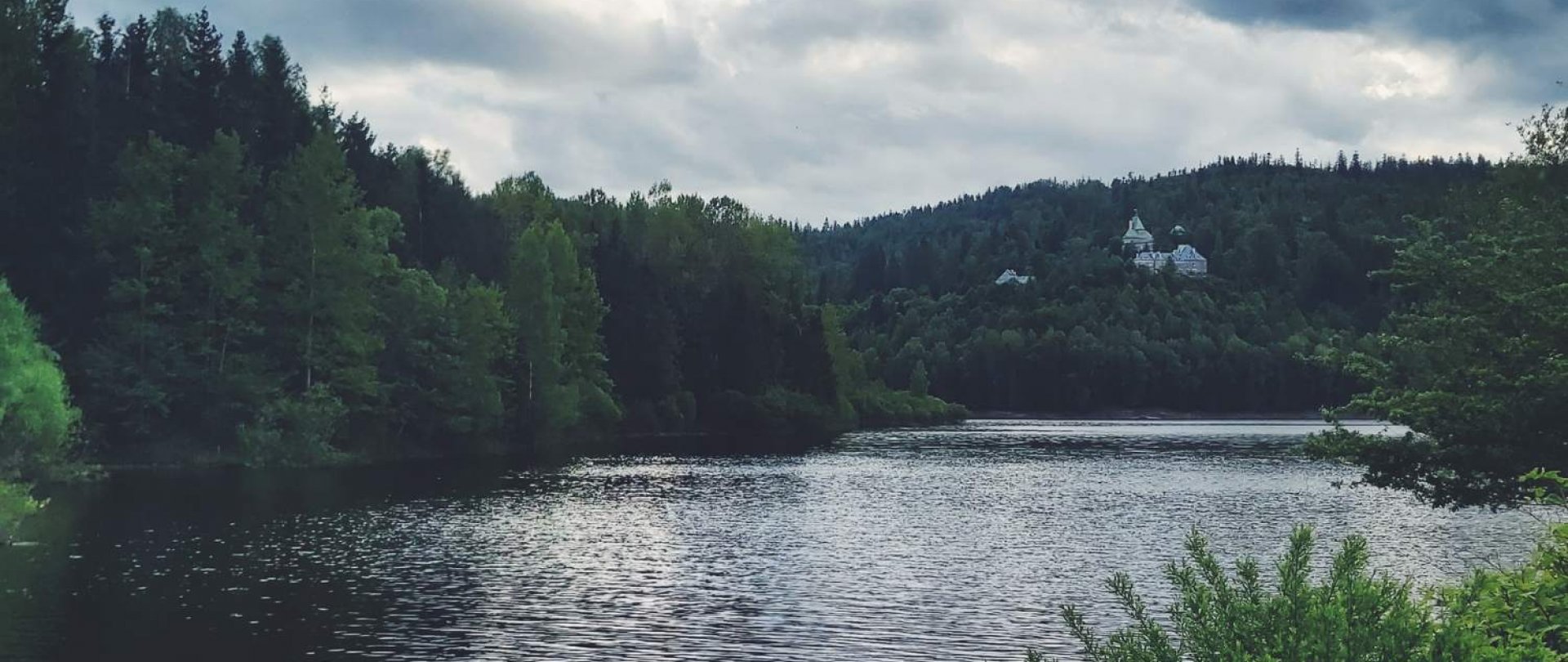The summer residence of the President of the Republic of Poland is, of course, by the sea, but the winter one is in the mountains - in the historic castle in Wisła. What is the history of this place, and can the Presidential Castle in Wisła be visited?
Standing by Lake Czerniańskie and looking towards the wooded slope of Zadni Gron, you will see the modernist structure of the Presidential Castle of the Republic of Poland in Wisła. Locals often refer to this place simply as "the little castle," perhaps because the building, without a tower and drawbridge, doesn't resemble the fairy-tale royal castles. However, this unique structure deserves our attention and a closer look at its history.
The Habsburg Hunting Lodge
The current castle, as we know it today, might never have been built if it weren't for the hunting lodge that existed here in 1907. This building was constructed at the request of Archduke Frederick of Teschen, who was captivated by the beauty of the Beskid landscape. The original structure was a single-story, larch-wood building in the Carpatho-Tyrol style, designed by Ernest Altmann. The lodge had around thirty rooms, a large dining room, a spacious terrace, and a veranda, and it was constructed by Eugeniusz Fulda's firm from Cieszyn.
The Habsburg Lodge was primarily used for hunting, but it wasn't just the owners who came here for hunts; German Emperor Wilhelm II and Austrian Emperor Charles I also visited for hunting trips.
After the end of World War I, in a gesture of revenge for the Habsburgs' excesses, the lodge was looted, and all of Archduke Frederick's property was nationalized, eventually becoming the property of the Ministry of Agriculture. In 1927, as a gesture of Silesia's unity with Poland, the Silesian Voivodeship Sejm decided to renovate the building and use it as the residence for the President of the Republic of Poland. However, shortly after the completion of the renovation, the building was completely destroyed by fire.
The Presidential Castle in Wisła
After the fire, a decision was made to construct an entirely new building. Importantly, the Silesian Sejm allocated 2 million zlotys for this purpose, and local residents and entrepreneurs also contributed to the investment. The residence was designed between 1929 and 1931 by the Krakow architect Professor Adolf Szyszko-Bohusz, who is considered an authority even among contemporary architects. In place of the original building, the Lower Castle (intended for lower-ranking staff) was built, while the Upper Castle was constructed slightly higher up. Initially, it had flat roofs, which did not fare well in the mountain climate. In 1938, steep roofs were added.
The main architect invited avant-garde artists Andrzej Pronaszka and Włodzimierz Padlewski to plan the interior concepts. Together, they created a unique atmosphere: glass tabletops, chrome furniture, stylish wicker furniture on the terrace, porcelain service, and glassware. The finishing touch was a sculpted portal with the Silesian Eagle incorporated into the main entrance. The residence was handed over to Ignacy Mościcki, the President of the Republic of Poland, in 1931.
After World War II, the building fell into disrepair. It was decided to restore it. In 1948, Bolesław Bierut stayed here. Later, after the abolition of the presidential office, the residence hosted prime ministers and officials from the Council of Ministers. However, representatives of the world of science and art also frequented the place, including figures like Tadeusz Kotarbiński and Nina Andrycz.
Only in 2002 was the property taken back by the Office of the President of the Republic of Poland. In 2005, after renovation and reconstruction, the castle was officially reopened for use by President Aleksander Kwaśniewski.
The Residence of the President of the Republic of Poland - The Castle National Historic Complex in Wisła
The entire complex consists of the Upper Castle, the Lower Castle, and the Forester's Lodge, which serves as a hotel and conference space, as well as a chapel dedicated to St. Hedwig of Silesia, built in 1909. The Upper Castle is open to visitors, but advance reservations are required.
Most of the furniture consists of original designs by Pronaszka, which have fortunately survived to this day. Chandeliers, standing lamps, some of the floors, and elements of the door and window joinery have also survived. Even the wall colors (gray and vanilla) from 1931 were faithfully reproduced.
Interestingly, a helipad was built near the residence. Already in the early 1930s, the lodge had its own drinking water supply, sewage treatment plant, central heating, and electricity supply, and even had tennis courts!
Chapel of St. Hedwig of Silesia in Wisła
There is also a functioning chapel on the premises. Services are held on Sundays at 10:30 (Protestant) and 12:00 (Catholic). The chapel, built in the Tyrolean style, was constructed in 1909 at the initiative of Archduke Frederick of Teschen and survived almost unchanged during the war years. The altar comes from the Church of the Exaltation of the Holy Cross in Bystrzyca, which was closed in 1897. The chapel also has newer elements, including a bell tower that stands 10 meters tall and was built in 2004.
Distance from Hotel Vestina in Wisła Malinka
Interestingly, the Hotel Vestina in Wisła Malinka is located close to the residence. You can reach it by car in about 10 minutes, and by bike in half an hour. For hikers, there is also the option of a longer walk along the picturesque Czerniańskie Lake, which takes about 1 hour and 20 minutes.
Check out our current packages and plan your vacation in Wisła!



